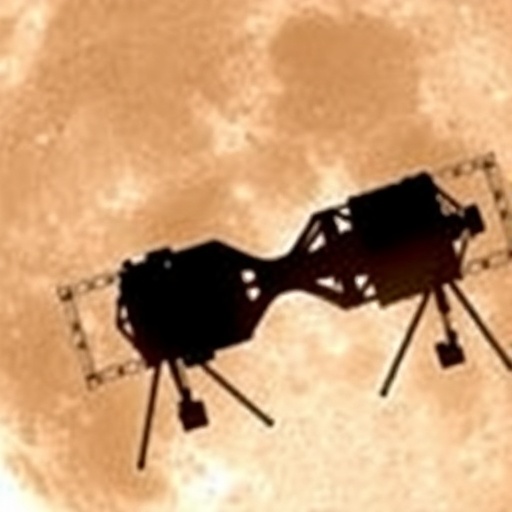NASA is on the cusp of a transformative milestone with its Artemis II mission, heralding a new era in human space exploration. Scheduled to embark on a nearly 10-day journey around the Moon and back, the mission aims to solidify the groundwork for future lunar exploration and initiate the path toward Mars. The Artemis II crew consists of four astronauts, who will not only demonstrate the capabilities of NASA’s Orion spacecraft in space but also conduct vital scientific investigations that could influence future explorations of the Moon and beyond.
The Artemis II mission is a significant stepping stone for NASA’s broader lunar objectives. It is designed to assess the viability of human presence in space and contribute to the overarching goal of landing astronauts in the Moon’s south polar region. This region is particularly intriguing for scientists, as it potentially houses water ice—an essential resource for sustaining human life during long-term missions. The upcoming expedition is not merely a flight; it represents humanity’s enduring curiosity to explore and understand our celestial neighbor.
One of the most captivating aspects of Artemis II is the planned scientific investigations during its flight to the Moon. As the crew navigates between 4,000 and 6,000 miles from the lunar surface, they will witness the Moon in a way that has never been experienced before by humans from such vantage points. In this instance, the visuals of the Moon will be akin to observing a basketball at arm’s length, allowing the astronauts to undertake detailed observations of the lunar landscape. This unique opportunity offers a lens through which to analyze geological features, enabling valuable insights into the Moon’s history.
As the Orion spacecraft traverses the far side of the Moon—an area that remains perpetually hidden from Earth’s gaze—the astronauts will engage in comprehensive geologic evaluations. Through their extensive training both on Earth and in simulated lunar environments, these astronauts are well-equipped to document and analyze the characteristics of impact craters, ancient lava flows, and more. This firsthand data is crucial for piecing together the Moon’s geologic past and will serve as an essential reference for future Artemis missions that intend to explore the lunar surface.
Kelsey Young, a leading lunar science expert at NASA’s Goddard Space Flight Center, articulates the importance of this opportunity, emphasizing the collaboration it fosters among astronauts, engineers, and scientists. The real-time data collection and operational strategies developed through this mission will create a framework for future expeditions, where insights gained could expedite scientific discoveries on the Moon.
Among the anticipated highlights of the Artemis II mission is the crew’s potential to become the first humans to see previously unlit regions of the Moon’s far side. This includes breathtaking geological structures, such as the Orientale Basin, known for its expansive 600-mile diameter crater. This transitional region serves as a remarkable point of interest, bridging the near and far sides of the lunar surface. Understanding this area may unveil critical information about the Moon’s formation and its subsequent geological evolution.
Moreover, the astronauts are expected to observe cosmic phenomena that elude regular telescopic monitoring from Earth. This may include witnessing brief flashes indicating the collision of space rocks with the Moon’s surface, offering vital data about impact rates and the lunar environment. They may also capture images of dust particles suspended above the lunar horizon, an enigmatic element that poses intriguing questions for planetary scientists seeking to understand its origin and behavior.
The Artemis II mission aims not only to broaden our understanding of the Moon but also to inform long-term human exploration strategies on both lunar and Martian terrains. The Artemis III mission, which is slated to follow, intends to delve deeper into geology by investigating specific landing sites and facilitating the collection of rock samples for extensive laboratory analysis on Earth. This work is critical because these samples may harbor signs of the Moon’s volcanic activity and may even unveil clues about the solar system’s formation.
Alongside lunar geology, Artemis II will assess the implications of the space environment on the crew’s health and performance. Insights from this aspect of the mission will be invaluable for future endeavors, particularly for sustained missions to the Moon and beyond. The data gathered will help refine training protocols and mission designs to ensure astronaut safety and well-being in the harsher realms of space exploration.
In preparing for Artemis II, NASA is closely coordinating its operations with the Payload Mission Operations Directorate at the Marshall Space Flight Center. This tight-knit collaboration aims to meld engineering acumen with scientific inquiry, ensuring that both aspects work harmoniously throughout the mission’s duration. Furthermore, the groundwork laid by this mission will stimulate an expansive dialogue about the role of humans in exploring celestial bodies and the associated risks and rewards.
As these astronauts gear up for their remarkable journey, they will be riding on a wave of innovation and discovery, echoing past lunar explorations while looking forward to uncharted territories. The scientific and technical advancements stemming from the Artemis program will undoubtedly enrich our understanding of not only the Moon but also the broader dynamics governing our solar system, shaping the future for generations of space explorers to come.
In closing, NASA’s Artemis II mission stands as a beacon of progress in human spaceflight, embodying a spirit of exploration and inquiry. The endeavor underscores the agency’s commitment to not only reach for the stars but to make these celestial bodies accessible to humanity. Through the dedication of the Artemis crew and the teams behind the scenes, we are witnessing the dawn of a new age in space exploration—one where human curiosity meets the vastness of the cosmos head-on.
Subject of Research: Artemis II Mission to the Moon
Article Title: Pioneering a New Era of Lunar Exploration with Artemis II
News Publication Date: October 2023
Web References: NASA
References: NASA Technical Publications
Image Credits: NASA’s Goddard Space Flight Center/Ernie Wright
Keywords
NASA, Artemis II, Moon, Lunar Exploration, Orion Spacecraft, Geology, Space Missions, Human Spaceflight, Space Environment, Mars Exploration.




